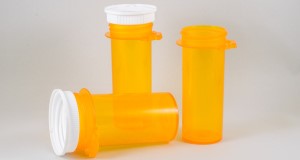Abstract
Properly disposing of expired or unused medications can help reduce the prevalence of prescription drug abuse in Florida. It also helps prevent accidental ingestion by children or pets, helps prevent accidentally taking the wrong medication, and prevents medications from entering water sources. This new 3-page publication of the UF/IFAS Department of Soil and Water Sciences provides some dos and don’ts for disposing of your medications. Written by Alexander J. Reisinger.
https://edis.ifas.ufl.edu/ss680
References
Florida Department of Health 2017. 2016-2017 Prescription Drug Monitoring Program Annual Report. Retrieved from http://www.floridahealth.gov/statistics-and-data/e-forcse/funding/2017pdmpannualreport.pdf. Accessed on 7 May 2018.
Substance Abuse and Mental Health Services 2017. Key substance use and mental health indicators in the United States: Results from the 2016 National Survey on Drug Use and Health (HHS Publication No. SMA 17-5044, NSDUH Series H-52). Rockville, MD: Center for Behavioral Health Statistics and Quality, Substance Abuse and Mental Health Services Administration. Retrieved from https://www.samhsa.gov/data. Accessed on 7 May 2018.
United States Environmental Protection Agency. 2011. How to Dispose of Medicines Properly. Report from the Office of Water, EPA 816-F-11-003. Accessed at https://www.epa.gov/sites/production/files/2015-06/documents/how-to-dispose-medicines.pdf on 7 May 2018.
Verlicchi, P., M. Al Aukidy, and E. Zambello. 2012. Occurrence of pharmaceutical compounds in urban wastewater: Removal, mass load and environmental risk after a secondary treatment - A review. Science of the Total environment 429:123-155. https://doi.org/10.1016/j.scitotenv.2012.04.028
Yang, Y.Y., G.S. Toor, P.C. Wilson, and C.F. Williams 2017. Micropollutants in groundwater from septic systems: Transformations, transport mechanisms, and human health risk assessment. Water Research 123:258-267. https://doi.org/10.1016/j.watres.2017.06.054
Unless otherwise specified, articles published in the EDIS journal after January 1, 2024 are licensed under a Creative Commons Attribution-NonCommercial-NoDerivs 4.0 International (CC BY-NC-ND 4.0) license.

